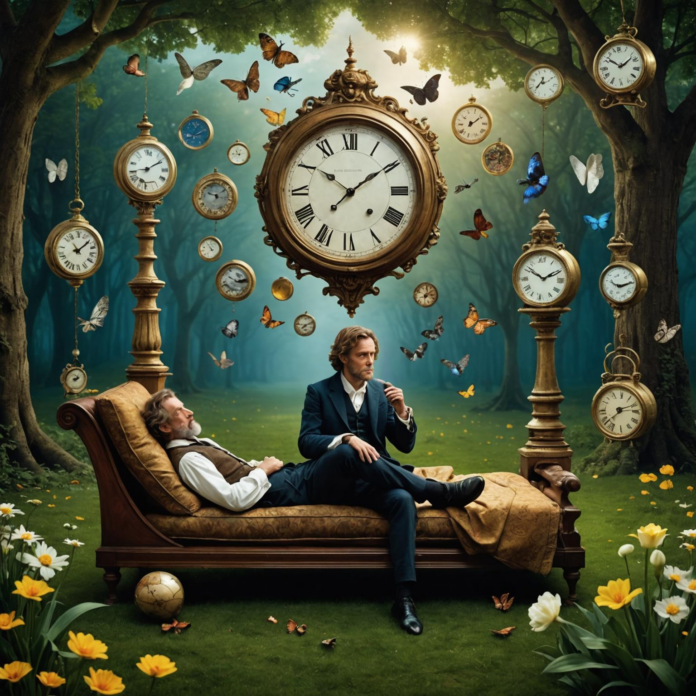Dreams have always fascinated me.
In this article, we’ll dive into the intriguing phrase “It was all a dream” and explore its many layers in philosophy, literature, and psychology.
Have you ever wondered if what we experience is real or just an illusion? Ancient philosophers like Plato and Descartes did. They debated the nature of reality, asking if our lives might be dreams crafted by our minds. This idea has shaped how we think about dreams today, not just as stories from sleep, but as deep insights into our lives.
In literature, writers like Shakespeare and Lewis Carroll used the dream trope to blur the lines between reality and fantasy, making us question what’s real and what’s not.
Key Insights
- Philosophical Roots: Ancient debates on reality and perception.
- Literary Device: A twist that explores reality versus illusion.
- Psychological Insight: Dreams reveal hidden fears and hopes.
- Plot Twist Impact: Challenges our understanding of a story.
- Critique and Praise: Some see it as a cop-out, others find it insightful.
Historical Origins
The phrase “it was all a dream” dates back to ancient times when thinkers like Plato and Descartes pondered if our experiences were mere illusions. They questioned the very essence of our existence, pushing us to seek deeper truths.
This philosophical inquiry laid the foundation for how we view dreams today, not just as nighttime stories but as significant revelations about our realities.
Dreams symbolize a shift in perspective, urging us to reflect on the fleeting nature of our experiences.
Literary Examples
Moving from philosophy to literature, the phrase “it was all a dream” often serves as a powerful twist. It reveals the illusory nature of events, making us question reality.
For example, Shakespeare’s ‘A Midsummer Night’s Dream’ creates a fantastical world that challenges what’s real. Similarly, Lewis Carroll’s ‘Alice’s Adventures in Wonderland’ blurs reality and fantasy, inviting multiple interpretations.
Psychological Insights
Dreams offer profound psychological insights. They reflect unresolved conflicts, fears, and hopes hidden from our waking mind.
By analyzing dream symbols, we uncover clues about our inner state. These nighttime stories help our minds process daily experiences, memories, and emotions.
Understanding our dreams provides valuable tools for self-reflection and personal growth, enhancing our empathy and insight.
Dream interpretation isn’t just introspective; it’s a path to greater self-awareness and compassion.
Plot Twists
The “It Was All a Dream” plot twist challenges our perception of reality, reshaping our understanding of a story’s themes.
In TV shows, this trope makes us question the authenticity of characters’ experiences. When a protagonist wakes up, we reconsider everything that seemed real.
This twist isn’t just about confusion; it offers fresh perspectives on subconscious elements driving the narrative.
Criticisms and Praise
While some critics see the ‘It Was All Just a Dream’ trope as a cop-out, others appreciate its depth. This device can divide audiences. Some feel it makes the plot meaningless, while others find it reveals characters’ fears and struggles.
- Character Depth: Dreams reveal hidden fears and desires.
- Narrative Layers: Adds complexity to the storyline.
- Emotional Impact: Evokes strong emotional responses.
- Psychological Exploration: Offers a window into characters’ minds.
- Creative Freedom: Allows for surreal sequences.
Dreams can be powerful, but they need careful handling to avoid backlash.
Symbolism and Themes
Exploring dreams adds depth to characters, revealing symbolism and themes. The ‘It Was All Just a Dream’ trope symbolizes unreality and ambiguity, challenging our perceptions.
Themes of disillusionment and escapism are common, as characters navigate their subconscious fears. This device invites introspection and self-discovery.
Symbolically, it can represent a reset or new beginning, offering opportunities for reflection and growth.
Modern Usage
Today, the phrase ‘It was all a dream’ is a versatile storytelling tool. It intrigues and challenges audiences, exploring the boundaries of reality and imagination.
It’s used in various mediums:
- Pop culture: Enhances plot twists.
- Music: Reflects personal experiences.
- Literature: Challenges perceptions.
- Media: Creates surprising narratives.
- Social media: Expresses skepticism or amusement.
Its versatility allows for anything from playful memes to deep contemplations about reality. By using ‘It was all a dream,’ creators invite us to question what we believe is true, serving our quest for deeper understanding and connection.
Conclusion
Reflecting on the ‘it was all a dream‘ trope, it’s clear that its historical roots, rich literary examples, and psychological implications make it a powerful narrative tool.
While some criticize it as a cheap plot twist, others praise its ability to explore deeply into symbolism and themes.
In modern usage, this device continues to captivate and provoke thought, reminding us of the blurred lines between reality and imagination.
Ultimately, it’s a confirmation to storytelling’s enduring complexity.
